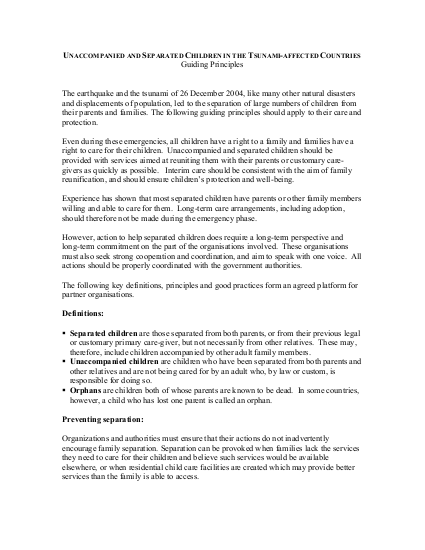
The earthquake and the tsunami of 26 December 2004, like many other natural disasters and displacements of population, led to the separation of large numbers of children from their parents and families. The following guiding principles should apply to their care and protection. Even during these emergencies, all children have a right to a family and families have a right to care for their children. Unaccompanied and separated children should be provided with services aimed at reuniting them with their parents or customary care-givers as quickly as possible. Interim care should be consistent with the aim of family reunification, and should ensure children’s protection and well-being. Experience has shown that most separated children have parents or other family members willing and able to care for them. Long-term care arrangements, including adoption, should therefore not be made during the emergency phase. However, action to help separated children does require a long-term perspective and long-term commitment on the part of the organisations involved. These organisations must also seek strong cooperation and coordination, and aim to speak with one voice. All actions should be properly coordinated with the government authorities.